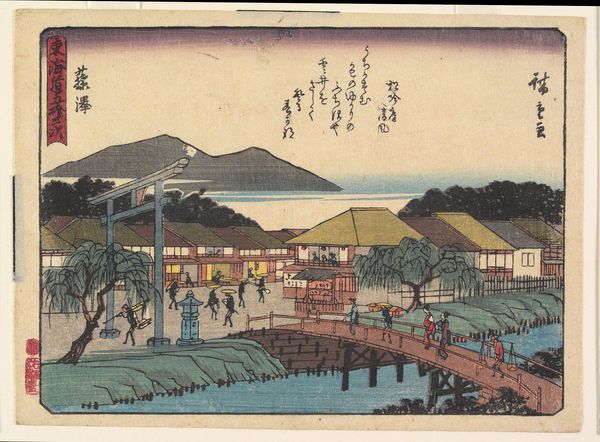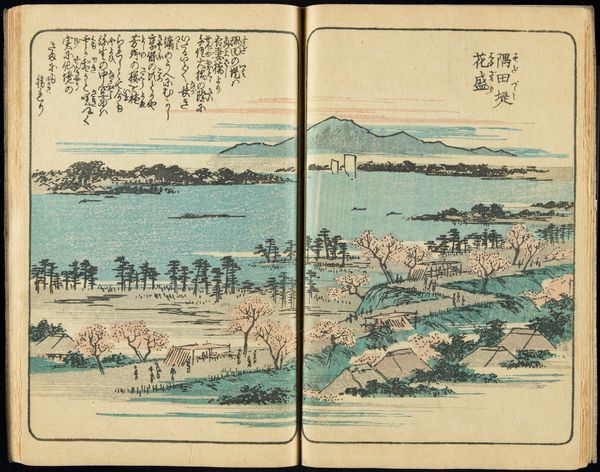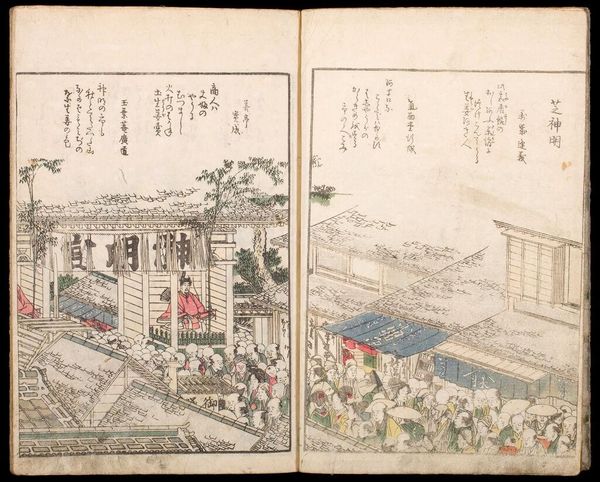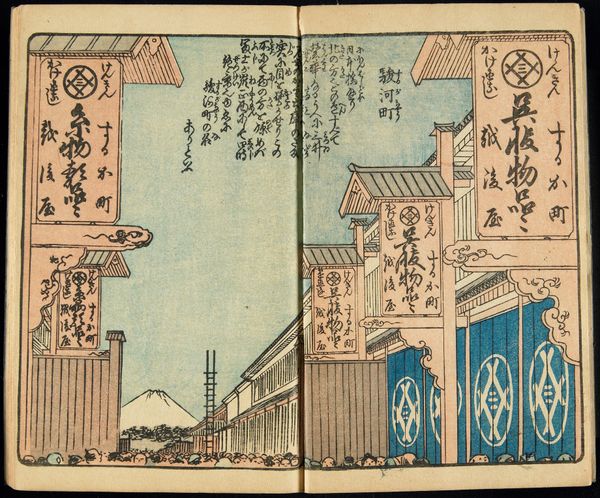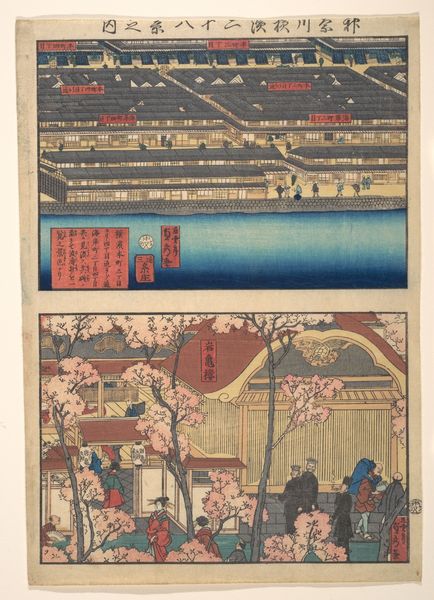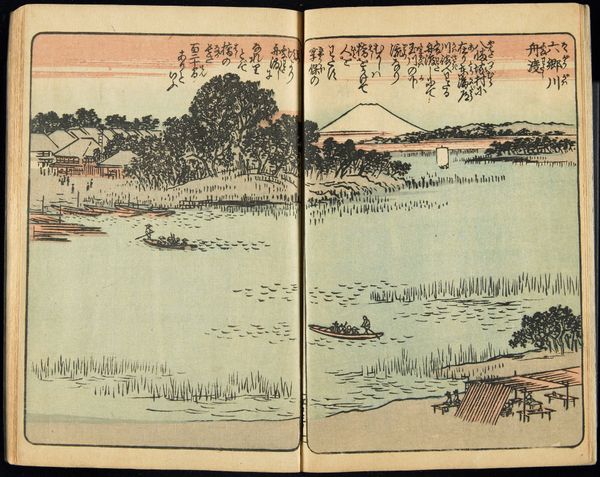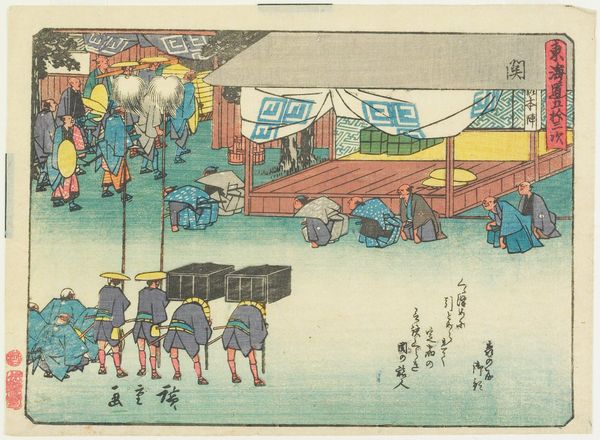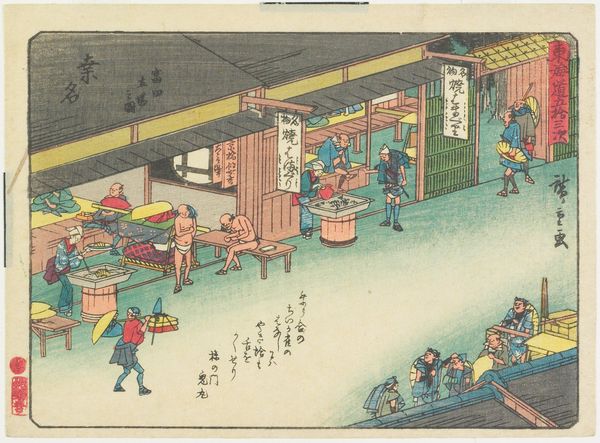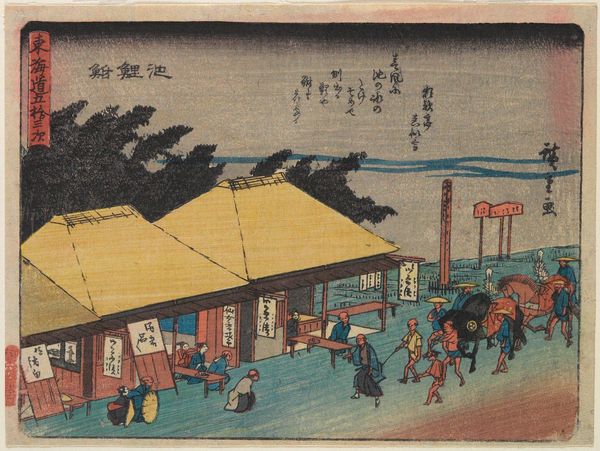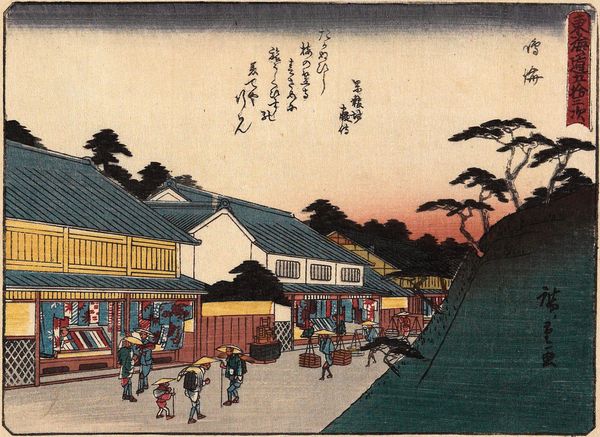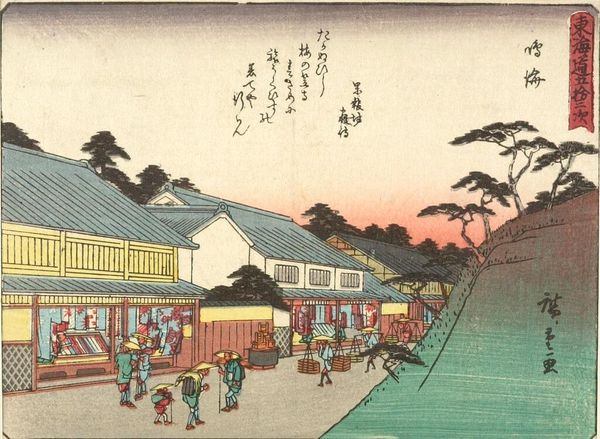
Illustrated Book -Souvenir of Edo- vol. 4(north) 1850
0:00
0:00
drawing, print, paper, ink, woodblock-print
#
pen and ink
#
drawing
# print
#
book
#
asian-art
#
ukiyo-e
#
japan
#
paper
#
ink
#
woodblock-print
#
cityscape
Dimensions: 7 1/16 x 4 13/16 x 3/16 in. (18 x 12.3 x 0.5 cm) (outer frame)
Copyright: Public Domain
Curator: The level of detail in this book is staggering. Known as "Illustrated Book -Souvenir of Edo- vol. 4(north)", this work was created around 1850 by Utagawa Hiroshige. We're fortunate to have this particular volume on display here at the Minneapolis Institute of Art. It showcases Hiroshige's adeptness with woodblock printing and pen and ink. Editor: It has this strangely serene quality, almost dreamlike despite depicting what seems to be a very active river scene in a bustling city. There is this intriguing harmony between the built structures along the banks and the fluidity of the water. Curator: The image pulls you into this world, doesn’t it? Woodblock prints, especially Ukiyo-e like this, served as visual shorthand for a culture’s values, rituals, and aspirations. Here, we are transported to Edo, offering glimpses into the everyday life, into popular entertainment. Notice how even the characters along the shore read as almost archetypal. Editor: Right, figures seemingly suspended in mid-action as they traverse a delicate bridge – their stylized poses, practically choreographed to express harmony between nature and humanity, a deeply symbolic space of transit! Can you tell me what the role these souvenirs had at that time? Curator: Remember that, these kinds of illustrated books, like this souvenir of Edo, performed many public roles: guidebooks, maps of local lore, and above all, they created a kind of tourism in the domestic space. Consider how the visual depiction would color the way that travelers anticipated a new site or recalled a visit. How did images help craft experience and memory in 19th century Japan? Editor: Thinking about what's not directly shown here becomes critical, you’re so right! It suggests something deeply evocative regarding people's relationship to an increasingly urbanized existence as it unfolds. What persists within shared narratives about "Edo," the spiritual or material promise held out to those in transition, or longing. I wonder whether or not the architectural structures serve also as icons! Curator: I am particularly moved by Hiroshige’s skill in utilizing composition, with the river acting almost as an unfolding scroll. There is such skillful manipulation of space, perspective, narrative—it’s a wonderful artifact, as both a work of art, and as a document that communicates aspects of Japanese urbanity from the period. Editor: Precisely! "Illustrated Book -Souvenir of Edo-" provides an accessible window into understanding an artist’s visual articulation of a period. Through Hiroshige's image, we perceive glimpses not just into past experiences but collective yearnings as well—and into our own expectations too.
Comments
No comments
Be the first to comment and join the conversation on the ultimate creative platform.
